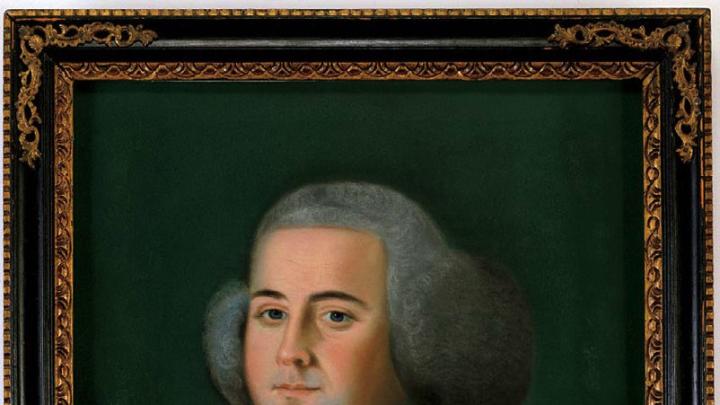Editor’s note: As early-action applicants to the College class of 2021 anxiously await a response, the account of an admissions ordeal in 1751 may offer perspective. Richard Alan Ryerson ’64 includes the passage in his new book, John Adams’s Republic: The One, the Few, and the Many (Johns Hopkins), as background on the future president’s intellectual development. The author is former editor in chief of The Adams Papers at the Massachusetts Historical Society and former academic director and historian of the David Library of the American Revolution.
***
In the summer of 1751, an anxious 15-year-old set off from Braintree on the 12-mile route to Cambridge. His schoolmaster had promised to accompany him to his admissions exam at Harvard College, but was indisposed that morning. Our subject picks up his story:
terrified at the Thought of introducing myself to such great Men as the President and fellows of a College, I at first resolved to return home: but foreseeing the Grief of my father and apprehending he would not only be offended with me, but my Master too whom I sincerely loved, I aroused myself and collected Resolution enough to proceed….Arrived at Cambridge I presented myself…and underwent the usual Examination by the President Mr. Holyoke and the Tutors….Mr. Mayhew into whose Class We were to be admitted, presented me a Passage of English to translate into Latin. It was long and casting my Eye over it I found several Words the latin for which did not occur to my memory. Thinking that I must translate it without a dictionary, I was in a great fright and expected to be turned by, an Event that I dreaded above all things. Mr. Mayhew went into his Study and bid me follow him. There Child, said he is a dictionary, there a Grammar, and there Paper, Pen, and Ink, and you may take your own time. This was joyful news to me and I then thought my Admission safe. The Latin was soon made, and I was declared Admitted…I was as light when I came home as I had been heavy when I went.
This revealing portrait of the social world of mid-eighteenth-century Harvard College—recorded by the future lawyer, congressman, diplomat, and political theorist who became the second president of the United States—suggests, through the informality and immediacy of the admissions process, how small the institution was then: a president, two professors (already occupying endowed chairs), four tutors, and about 100 students in four classes. The College had no electives; every student took every course, in the same order. The single tutor assigned to each entering class handled its basic instruction until graduation. Professors Edward Wigglesworth (theology) and John Winthrop (mathematics and natural philosophy) offered the only specialized instruction.
John Adams says little about his college courses or instructors, with the exception of his favorite teacher, Professor Winthrop. But he does offer a few clues to understanding a large part of a Harvard education—in the 1750s as much as in 2016: the intellectual and social impact of the students upon each other. To appreciate this effect, one must understand two facts about colonial Harvard: its primary purpose was to educate future members of a learned ministry and an effective civil government; and it did this in a highly structured social world. From the 1640s to 1770, the president and faculty ranked the members of each entering class in the fall of their freshman year according to their perception of the social standing of each student’s parents and other close relatives. This order was largely preserved until graduation day, at which time several students who had done exceptionally well were finally recognized with speaking parts, regardless of their social standing.
As the son of a Braintree farmer, church deacon, and town selectman, Adams was ranked in the middle of his class and awarded a scholarship. As an undergraduate, he responded with enthusiasm to three opportunities not available in Braintree. He seriously engaged the College’s relatively liberal curriculum in theology, mathematics, and natural science; he made friends with students from different social classes, often those above his own; and he joined a speaking club where his performances so impressed his classmates that they suggested he would make a better lawyer than the minister his pious father desired. (He would become the only graduate in his class to hold a Hollis scholarship and not become a minister.)
Harvard acknowledgments of Adams’s intellectual engagement came quickly. A speaking part at graduation in 1755 earned him his first job, as a teacher; he used his salary to pay for his legal studies. His use of the College library after graduation sustained him until he could build up his own impressive collection in legal and political history. And in his master’s thesis address in 1758, a rite of passage for most ambitious Harvard graduates, he defended a theme that would increase in significance for the rest of his life: that civil government was necessary for man.
By the mid eighteenth century, Harvard had become, above all else, a recruiter of intellectual talent and a unifying cultural force in Massachusetts and neighboring New England colonies. In this respect Adams, born into a family thoroughly committed to its own small community, did just what the College hoped. As the idealistic celebrant of New England’s religious and civil history in A Dissertation on the Canon and the Feudal Law (1765); as the lead attorney courageously defending the British soldiers indicted in the Boston Massacre (1770); as the congressman who led the final floor fight for Independence (1776); as the principal negotiator of America’s peace treaty with Britain (1783); as the author of A Defence of the Constitutions of the United States (1787-88), the longest and most learned political work by an eighteenth-century American; and, as president, when defending America’s maritime independence in the Quasi-War with France (1797-1800), he adopted broader views and higher aspirations in religion, in law, and in politics.








